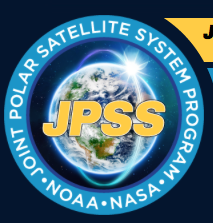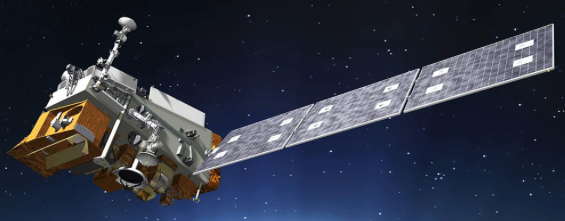
A financial report and commentary regarding NOAA's Polar Follow On program.
NOAA's Polar Follow On (PFO) program to build the third and fourth Joint Polar Satellite System (JPSS) weather spacecraft is the only satellite program that will be cut substantially in the final FY2017 omnibus appropriations bill. By contrast, funding for a follow-on space weather satellite is doubled compared to the request, although the request was only $2.5 million. Congressional leaders reached agreement on a "full year" omnibus appropriations package last night. It is expected to clear Congress and be signed into law before Friday when the Continuing Resolution (CR) currently funding the government expires.
Overall, NOAA's request for procurement, acquisition and construction of satellites was $2.063 billion and Congress is poised to approve $1.979 billion.
NOAA operates the nation's civil weather satellites. JPSS is a new generation of polar orbiting satellites that circle Earth's poles, providing data on every part of the planet. The Geostationary Operational Environmental Satellite (GOES) spacecraft are placed into geostationary orbit above the equator, a location particularly useful for monitoring tropical regions where hurricanes form. NOAA is just introducing the latest version of the GOES satellites, referred to generically as "GOES-R" although GOES-R itself is just one spacecraft and is already in orbit. It is part of a set of four satellites, with the remaining three (-S, -T, and -U) scheduled for launch over the next decade.

NOAA defines the JPSS program itself as only the first two satellites in the series. JPSS-1 is scheduled for launch in late September 2017 and JPSS-2 in the fall of 2022. The next two spacecraft, JPSS-3 and JPSS-4, are funded separately in the PFO program with launch dates later in the 2020s. Based on advice from independent review committees, NOAA is hoping to build all four spacecraft in close order to achieve economies of scale and be prepared if any of them fail prematurely or are lost in a launch accident.
The omnibus appropriations bill fully funds JPSS and GOES-R, but cuts funding for PFO by $64 million, providing $328.9 million instead of the $393 million requested. The explanatory statement accompanying the bill does not explain why PFO was cut. The $393 million request included $10 million for an Earth Observing Nanosatellite-Microwave (EON-MW) to build a very small satellite to host a microwave sensor in case anything goes wrong with JPSS-1. The microwave measurements are critical to weather forecasting. Congress has not been enthusiastic about EON-MW, but agreed in the omnibus bill that NOAA could proceed with it as long as the PFO program is not negatively impacted.
NOAA uses radio occultation data to improve weather forecasts. Measurements of temperature and water vapor in the lower atmosphere are obtained using signals from satellites like GPS that provide positioning, navigation and timing data. It has a cooperative program with Taiwan to build and launch COSMIC satellites to provide that data and is seeking funds to build a new generation of those small satellites. Congress directed NOAA to begin a "commercial weather data pilot" program to purchase such data from commercial companies instead, however. NOAA is proceeding with that effort, but requested funds for a new set of satellites anyway. The omnibus bill denies the funding ($8.1 million) for the satellites, but approves an equal amount for the associated ground system. As for the commercial weather data pilot program, it provides the requested level of $5 million.

NOAA’s Joint Polar Satellite System (JPSS) provides global observations that provides both short- and long-term forecasts, including those that help predict and prepare for severe weather events.
NOAA also is responsible for operational space weather forecasting — monitoring the Sun for ejections of particles that can impact the Earth and cause outages in the electric grid and spacecraft, for example. NOAA is currently operating the Deep Space Climate Observatory (DSCOVR), located at the Sun-Earth L1 Lagrange point about 1 million miles (1.5 million kilometers) from Earth. DSCOVR has four instruments, two of which are dedicated to space weather. Space weather has become of increasing concern because of the growing reliance, on Earth and in space, on technologies susceptible to temporary or permanent damage. NOAA wants to get started on a replacement for DSCOVR. The $2.5 million requested for FY2017 is just the beginning of an effort to acquire two satellites, the first of which would be in place by 2022, the design lifetime of DSCOVR. In the FY2017 budget request, NOAA projected requesting a total of $368 million from FY2018-FY2021 for the satellites, sensors, and launch vehicles.
In action last year, the House Appropriations Committee approved the request, while the Senate Appropriations Committee tripled it to $7.5 million. The final figure in the new omnibus appropriations bill, $5 million, is the compromise. (Some Senators have been focusing on the space weather issue for several years. Sen. Gary Peters (D-MI) and six bipartisan co-sponsors reintroduced the Space Weather Research and Forecasting Act earlier this year. S. 141 was reported from the Senate Commerce, Science, and Transportation Committee on March 30, 2017.)
The omnibus appropriations bill combines 11 of the 12 regular FY2017 appropriations bills (the 12th, Military Construction/Veterans Affairs, was the only FY2017 appropriations bill to clear Congress last year). The government has been operating on a series of Continuing Resolutions (CRs) at their FY2016 spending levels since October 1, 2016 when FY2017 began. The most recent CR, passed last Friday, expires this Friday, May 5. The goal is to get the omnibus bill signed into law before then.
The next step is for the bill, H.R. 244 as amended, to obtain a "rule" from the House Rules Committee that determines what amendments (if any) may be introduced and sets the amount of time for debate. The committee will meet tomorrow at 3:00 pm to consider the bill. H.R. 244 is being used as the legislative vehicle for the omnibus appropriations bill. It originated as a bill on an unrelated topic (HIRE Vets). It is common for Congress to use an existing, unrelated bill for an appropriations measure like this because it has already gone through part of the legislative process so can move along quickly. The bill and explanatory statement are posted on the Rules Committee website.
An updated version of SpacePolicyOnline.com's fact sheet on NOAA's FY2017 budget request will be posted soon. It has a table comparing FY2016 appropriations with the request as it worked its way through Congress. The fact sheet will be available from the left menu on our home page under "Our Fact Sheets and Reports." A fact sheet on NOAA's FY2018 budget request is also there with as much information as is known at the moment.
by Marcia Smith SpacePolicyOnline.com

